Vineyard
Planning
The first step in pursuing your dream is vineyard planning. Vineyard planning ensures you come to grips with the effort and resources involved in planting and maintaining a vineyard. It also defines the necessary steps and requirements to maximize the potential of growing quality wine grapes.
To maximize the return on the investment in time and money to have a vineyard, you need to gain knowledge about the process—and develop a plan.
This page aims to provide the knowledge necessary to plan a vineyard. It begins with a summary overview of the topics to consider. The overview also contains embedded internet links proffering term definitions. At the bottom of the page are curated topic blocks, which link to sources with additional vineyard considerations crucial to the planning process.
Key Areas of Focus
To achieve success, you need to immerse yourself in several key topics:
- Soil Type—understanding your soil is crucial for selecting the right grape variety.
- Grapes for Your Hardiness Zone—choose grape varieties that thrive in your plant hardiness zone.
- Row and Vine Layout—proper spacing and alignment ensure optimal growth.
- Irrigation Requirements—grapevines need consistent watering, especially in dry regions.
- Vine Trellising and Training—structure your vines for better fruit quality and easier management.
- Ground Cover—determine the level of cover required to protect and enrich your soil and vines.
- Disease, Pests, and Critters—stay ahead of potential threats from both small and large creatures.
Local Expertise
Where can you find guidance? Start locally, if possible. There’s no better teacher than a local grape grower—talking to more than one grower can offer diverse insights. The advice from local experts will be practical and tailored to your region. Be sure to have specific questions related to your site and plans.
Excellent topics can include typical soil characteristics, grape varieties that do well in the area, recommended trellis approaches, most prevalent pests, and biggest challenges.
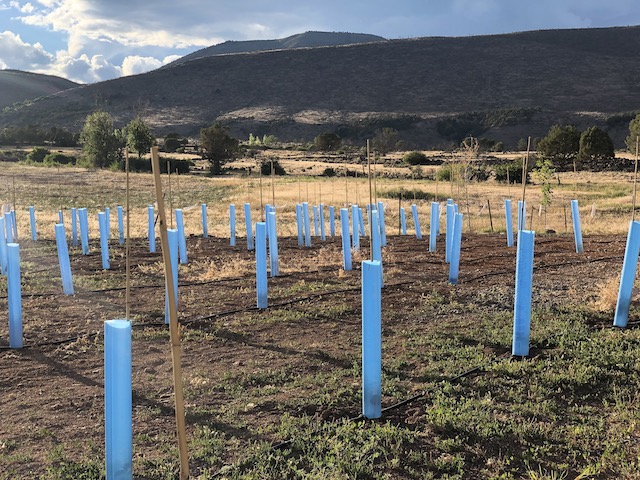
Extension Offices
Another valuable resource is your local state or county extension office. Established by the Smith-Lever Act of 1914 to support agricultural research and address rural issues, state universities often manage these offices. States with mature grape-growing industries have robust viticultural extension offices offering topic-specific catalogs covering all aspects of grapevine cultivation. Your local extension office should provide information tailored to your area.
Further Research
For in-depth knowledge, consider additional resources:
- WineMaker Magazine (WMM): The premier resource for winemaking hobbyists, with a strong focus on viticulture. While some content is behind a paywall, the annual vineyard planning and planting boot camp is worth the investment. Membership is less than $50 a year. You can’t afford not to benefit from this worthwhile resource.
- Grapevine Magazine: Although geared more towards professionals, hobbyists will also benefit from its content. The content is free on its website, where you can also sign up for its newsletter.
- Marshall’s Wine Encore Reference Page: Contains a bevy of resources and references to growing and making wine.
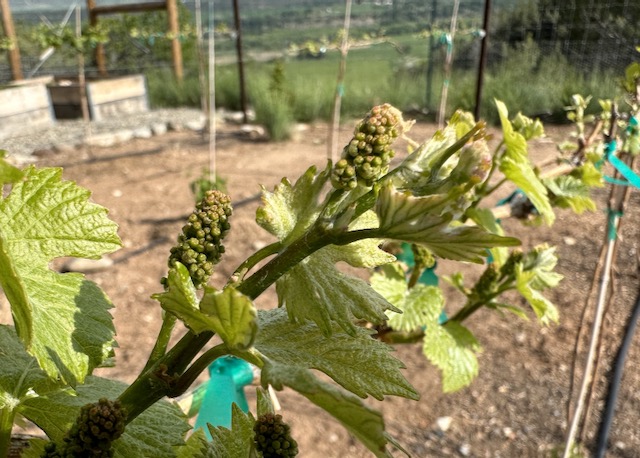
Taking Action
You may already have a dream or idea about the grape types you’d like to plant. Whether you do or not, you must know your choice is appropriate for the vineyard site’s climate and conditions. The grapes will either be Vitis vinifera (European varieties) or hybrid (a cross between European and American varieties).
You’ll also need to choose the type of plant to order, whether grafted rootstock or own-rooted vines. Grafted rootstock is highly recommended for Vitis vinifera.
There are two primary reasons for this:
First, phylloxera resistance: Grafted rootstock is typically phylloxera-resistant, which is crucial for the long-term health of your vineyard. If you plant stock with phylloxera, your new vineyard won’t last a few years. Nursery-grown vines may not offer the same level of protection, so it’s essential to confirm this with your supplier.
American and hybrid vine varieties are already resistant to phylloxera.
Second, adaptability: Grafted rootstock is planted in the soil where the vine will grow permanently, allowing the roots to establish and expand effectively in their native environment.
You can order rootstock or own-rooted vines online from various nurseries. To ensure availability, plan to order 6 – 12 months before planting.
When you’re ready, work through the online topic blocks provided below. Develop a plan of action with a budget and schedule for planting, including tending to the first year of growth. The budget and schedule will help you arrange necessary items, including ordering equipment and materials and organizing assistance from family, friends, or contractors.
General Eisenhower once said, “Good planning without good working is nothing.”
Now, it’s time to get to work and follow your dream!
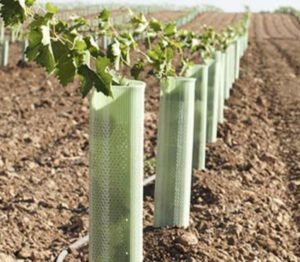
The Life Cycle of a Wine Grape: From Planting to Harvest (Wine Cooler)
A high-level overview of the process affirming commitment requirements. Making wine is a long, slow process. It can take a full three years to get from the initial planting of a brand-new grapevine through the first harvest, and the first vintage might not be bottled for another two years after that. But when terroir and winemaking skills combine, the finished product is worth the wait.
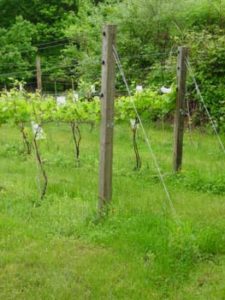
Planning Your Backyard Vineyard (WineMaker)
With all the excitement of harvest and crush in the air, it’s easy to forget about planting. But if you’d like to start a small, backyard vineyard next spring, there are some important things to do before winter arrives. It’ll make it easier to get your vines in the ground when the weather warms up. The most important elements in any vineyard development project are research and resources. And the most important resources are other grape growers.
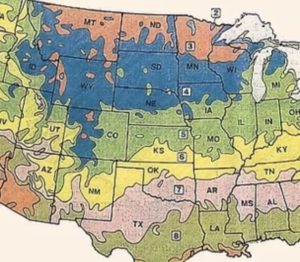
How to Start a Vineyard (WikiHOW)
Many people dream of turning their love of horticulture and fruit growing into a vineyard, and others simply want to start a backyard vineyard to make a few bottles of their own wine. Whether a vineyard is your hobby or a potential money-making investment, it’s essential to start off on the right track. Prepare your land, family, and pocketbook, choose the best grapes, and start growing. It may sound simple, but there’s a lot more to it than many first time grape growers know.
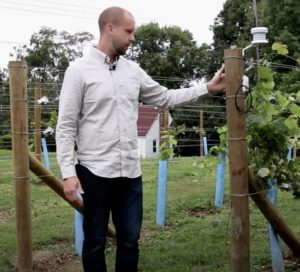
Starting a Backyard Vineyard (The Home Winemaking Channel)
In this eight-and-a-half-minute video, we will explain the basics of growing a vineyard in your backyard. This vineyard is in the Pittsburgh area and will produce around 500lbs of grapes once mature. The vines planted are Cabernet Franc, Merlot, Lemberger, Riesling, and Traminette. The vineyard should start producing grapes in the third year.

Should you Plant Your Vineyard Without North-South Rows? (Grapevine Magazine)
Row orientation is one of the first decisions a grower makes when planting a new vineyard. How much does this decision matter, and what should you consider when choosing row orientation? For generations, many have touted north-south orientation as a best practice because it exposes the canopy to the most direct sunlight. But modern research suggests that, it is more complicated than this.
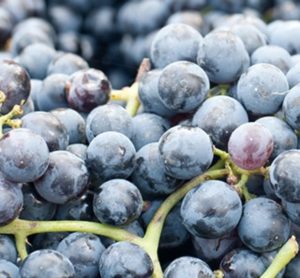
How Much Wine Can a Small Vineyard Produce? (UC Davis Extension)
Many people are interested in growing grapes for homemade wine. This PDF worksheet should help you predict your production capabilities. Grape crops vary from year to year, but it’s important to estimate yield in order to plan for your required winemaking equipment.
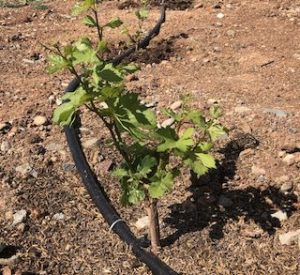
Vineyard Irrigation: Wet Your Plants with Efficiency & Precision (Grapevine Magazine)
The importance of water and its management for grapevine quality and yield cannot be overstated,” said Randy Heinzen, president of Vineyard Professional Services in Paso Robles, California. “When it comes to irrigation,” said Heinzen, “vineyards depend on drip irrigation for the most part.
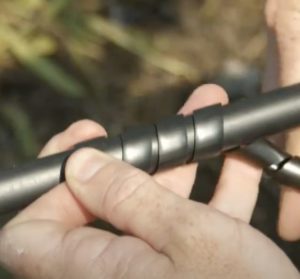
How to Setup a Drip Irrigation System (Ison’s Nursery & Vineyards)
In this 11-minute video, Greg Ison from Ison’s Nursery and Vineyard demonstrates how to train a newly planted muscadine vine up to the wire, and how to install a drip irrigation system to support the vines. These are important steps in establishing your vineyard.
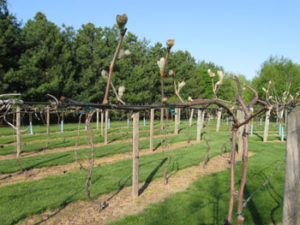
Vineyard Trellis and Training (WineMaker)
There are several options available to a backyard grape grower when considering which trellis configuration and which training system to use. How do we focus on what’s important in a trellis and training system and avoid getting caught up in the mire? Let’s look at the basic requirements and select a trellis system that has practical trellis design and installation parameters for the backyard grape grower.
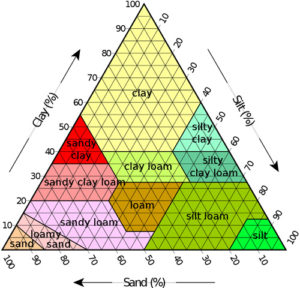
Dirt Don’t Lie: The Impact of Soil on Vineyards and Wine (WineMaker)
In general, wine grapes of the Vitis vinifera family grow between the 30th and 50th parallels of latitude where the average temperatures are between 50 and 70 °F (10 and 21 °C). Grapes are grown on stony hillsides with almost no soil, the vines clinging and fighting for every inch of purchase. Grapes are grown in deep, fertile soil where they produce astounding amounts of vigor (and hopefully fruit!).
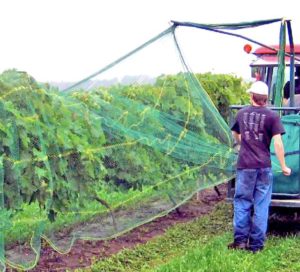
Wildlife Control in the Vineyard (Grapevine Magazine)
Depending on what region of the country your vineyard is located, you may be faced with many different animals that love to wander into your grapevines. Some of the most common wildlife species that negatively impact vineyards are deer, rodents, birds, and raccoons. Birds, in particular, are notorious for pecking through fruit and damaging it so that it cannot be used for winemaking.

